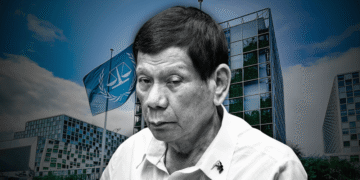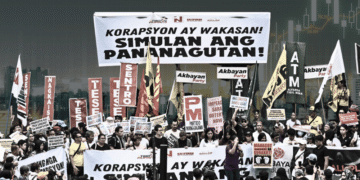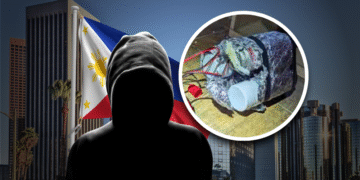Every year, it’s the same story.
A typhoon slams into the Philippines, floods drown cities, families climb on rooftops, and our feeds fill with drone shots and hashtags. And every year, we move on—until the next one hits.
But if we already know the script, why aren’t we rewriting it?
At PGMN, we believe Filipinos deserve better than band-aid solutions and recycled relief drives.
So here’s our guide to helping—really helping—during typhoons and floods. From sharing working hotlines to funding real solutions, here’s what we can actually do.
Start here: working hotlines you can share right now
When disaster strikes, minutes matter. Here are some verified hotlines we compiled for search, rescue, evacuation, and emergency needs. Don’t wait—save and share these numbers:
National Disaster Risk Reduction and Management Council (NDRRMC)
- Smart: 0918-292-0865
- Globe: 0917-589-8513
- Landline: (02) 8911-5061 to 65 loc. 100
- Hotline: 143 or (02) 8790-2300
MMDA Metrobase (for Metro Manila flooding & traffic rescue)
- 136 (landline)
- 0917-842-8249
Department of Social Welfare and Development (DSWD) Operations Center
- (02) 931-8101 to 07
These are the lifelines—post them, print them, forward them.
And let’s stop flooding social media with vague “stay safe” posts when we can offer real tools.
You can also donate here
If you’re looking for a direct way to contribute, social media star Mika Salamanca has opened a donation drive to support victims of Typhoon Crising and the Habagat rains.
The drive is organized in partnership with the Angat Bayanihan Volunteer Network, which is already mobilizing hot meals across Metro Manila.
Here’s where you can send donations:
GCash: Vives Coronacion – 09661724008
Security Bank: Akbayanihan Foundation Inc – 000004686304
MAYA: Jan Kristoffer Enriquez – 09189182086
BPI: Aimee Santos – 0189573278
UnionBank: Jan Kristoffer Enriquez – 1096 5639 9995
In-kind drop-off: 36B Madasalin St, Brgy Sikatuna Village, Quezon City
Mika also promised full transparency on how donations will be used, with updates to be posted regularly. It’s a great option if you want your money to go directly to those in need.
But first: here’s a quick list of other legit relief orgs you can support
Sharing donation drives isn’t enough—we have to make sure they’re working. If you want to support efforts with a track record, here are some verified orgs you can amplify or donate to:
- Tulong Kabataan Network: @tulongkabataanph on Instagram and Facebook
- For the Future PH: focuses on fast, localized disaster response
- Libreng Sakay Volunteers: provides boat rescue and transport
- Caritas Manila: Catholic-led relief org with strong community ties
- Serve the People Brigade – UP Diliman: regularly mobilizes post-typhoon
- Team Rubicon Philippines: former military and trained civilian rescuers
- All Hands and Hearts: international group that builds storm-resilient shelters
Social media isn’t just for awareness—it’s for amplifying access. Post real links. Verify the numbers. Follow up. Let’s make it easy for people to act, not just react.
Fund the frontliners before the rain even starts
Let’s get this straight: Local Government Units (LGUs) are legally the first responders during typhoons and floods.
Under the Disaster Risk Reduction and Management Act of 2010, they’re required to allocate 5% of their annual budget to disaster preparedness—with 30% of that set aside for Quick Response Funds.
But in reality, most LGUs are overwhelmed the moment a major typhoon hits.
Many lack enough boats for evacuation, gear for rescuers, or even communication tools when networks go down. After Super Typhoon Haiyan (Yolanda) in 2013, local officials were among the missing. Offices were flattened. Phones were dead. The response stalled.
Want to help? Push for LGUs to receive not just budget—but training, equipment, and community-level rescue teams.
Support barangays with what they need before the storm hits. A few ropes, radios, and rubber boats could save hundreds of lives.
Skip the canned goods—donate cash
It feels generous to pack relief boxes.
But according to studies from USAID and global humanitarian groups, cash is king during disaster response. Here’s why: money allows NGOs and local responders to buy supplies fast and locally, avoiding clogged ports and the cost of transporting truckloads of unsolicited goods.
After Typhoon Haiyan, tons of clothes, expired canned goods, and unnecessary items arrived—most of them unusable.
Relief workers spent precious hours sorting through chaos instead of distributing what was actually needed.
Cash lets teams buy food, water, medicine, or fuel on the ground. It also helps boost local economies, which are already bleeding from typhoon damage. So yes—send money, not mystery boxes.
Volunteer—but don’t be the problem
The Filipino bayanihan spirit is real. But so is the chaos of untrained volunteers showing up at disaster zones.
Want to help on the ground? Join legit orgs—Red Cross, Team Rubicon, All Hands and Hearts, or local volunteer brigades trained for emergencies. Otherwise, stay out of the way. Seriously.
Uncoordinated volunteers can strain logistics, overrun shelters, or even become liabilities in rescue zones. Not to mention, many communities still deal with health risks post-disaster, including disease outbreaks and sanitation issues.
You can still do a lot remotely—handle logistics, amplify calls for donations, run fundraising campaigns, or help sort digital records of missing persons. Your contribution doesn’t need a vest or a selfie to matter.
Help rebuild lives, not just homes
The work doesn’t end after the floodwaters recede. That’s when it actually begins.
In every major disaster, thousands are displaced for months. Some live in tents or gymnasiums for years. So beyond handing out goods, think long-term. Support programs that fund storm-resilient housing, cash-for-work programs, and livelihood recovery.
After Haiyan, World Vision helped build permanent shelters and launched income-generating programs across Leyte and Samar. Their three-year response helped over 1.6 million people, proving that recovery is possible—if it’s funded properly.
And don’t forget mental health. Typhoon survivors face trauma, loss, and the grief of starting over. Fund programs that offer counseling, safe spaces for kids, and community rebuilding—not just concrete walls.
Think bigger than relief—invest in prevention
Let’s stop throwing money at the problem after the headlines. The real win? Making sure fewer people need relief in the first place.
This means investing in permanent evacuation centers, stronger building codes, and nature-based defenses like mangrove belts, which have been proven to reduce storm surge impact. It means pre-positioning relief goods, running evacuation drills, and making hazard maps available to every barangay.
Countries like Bangladesh are proof this works.
In the 1970s, they lost hundreds of thousands to cyclones. Today, thanks to 76,000+ trained community volunteers and thousands of elevated cyclone shelters, their death tolls from similar storms have dropped dramatically. They didn’t wait for the next tragedy—they built systems that stopped them.
We should, too.
Don’t glorify resilience. Demand accountability.
Every time the Philippines is hit by disaster, media outlets flood social feeds with stories of barefoot kids smiling through the rain as if that’s the story we want told.
But resilience shouldn’t be romanticized. It should piss us off that Filipinos are expected to survive catastrophe after catastrophe with a grin and a prayer.
We don’t need another tribute to how strong Filipinos are. We need to ask why people keep drowning in the same places, why bridges keep collapsing, and why we’re still lining up for relief packs every year.
Because until we demand systems that work, we’ll keep calling it resilience—when what we really mean is survival with no other choice.












